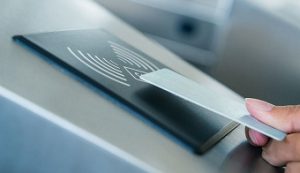
The basic principles of access control are well established: only authorised people should have access to secure areas, only at times that can be defined in advance, and only within a system that can identify exactly who went where, and when. Traditional mechanical lock-and-key systems cannot accomplish this — at least, not without loading a huge admin burden onto security staff. But modern, electronic wireless access control has the flexibility to achieve it.
What criteria determine the right sort of access control for your organisation? It makes sense to assess what is desirable against what is affordable or available in the electronic access control market today. Asking yourself these 5 questions will lead to a wise investment in the right technology:
Do you want to extend your existing system, or begin from scratch?
You are not stuck with locks chosen by a previous management team. Security needs change. Wireless locks like Aperio, for example, work seamlessly with existing systems from over 100 different access control providers, integrated online or offline. You will save time and money extending your current system with a technology like Aperio and users can continue with their existing credentials. Going forward, it makes sense to choose locks built using open architecture, for added flexibility and to future-proof your next investment.
Who are the site users and what kind of credentials suit their needs?
In many industries, access to premises is required by permanent staff and short-term contractors: your access system needs to be flexible. Different systems offer credentials stored on cards and fobs, or on programmable, battery-powered keys. For example, the new Openow app for SMARTair wireless locking converts a user’s smartphone into a virtual key. You issue and revoke user keys using the intuitive software, an efficient, flexible mobile management solution.
What is the structure of the site (or sites) you protect?
You will need different locks for high-traffic and low-traffic doors, indoor and outdoor use. Almost everywhere, wireless locks are much easier to install and to maintain than traditional wired magnetic locks — and more cost-effective to run. Certified wireless security locks provide extra protection for sensitive areas needing stringent standards. If you have a mobile workforce or manage dispersed sites, consider the credential management practicalities.
Do you want to secure more than just doors?
Some wireless systems have locks for cabinets, machines, windows and even server racks (handy if you want an extra layer of control over co-located servers). There will be workflow advantages in monitoring these ‘non-doors’ — medicine stores, for example, or car parks or lifts — from the same admin interface as your doors. Site users will appreciate the convenience of carrying one credential for every access need. For outdoor access points, you will need gate locks or padlocks certified for operation in extreme conditions. For example, CLIQ mechatronic padlocks are currently deployed outdoors at utility sites in Scandinavia and supermarkets in East Africa.
Do you need real-time capabilities?
Choose an Online system and you can manage and amend access control doors at any time and from anywhere, using the admin software. You can monitor sensitive areas like medicine stores remotely and in real time, and can revoke access rights if a user credential gets lost. In an emergency, remote locking or unlocking of an entrance could be critical. Aperio wireless locks, for example, are integrated with online electronic access and real-time monitoring systems in hospitals, manufacturing plants and student halls of residence. With some systems, including SMARTair, you can combine ‘Update on Card’ and Online updating for different doors within the same installation. The CLIQ Connect app and programmable keys make real-time control over remote sites or teams possible.
Wireless access control offers a compelling mix of audit compliance, easy installation, cost efficiency, and seamless integration. It makes life easier for security managers, and is deployed in premises as diverse as power plants and co-working spaces; museums and care homes; banks, schools and skyscrapers.











